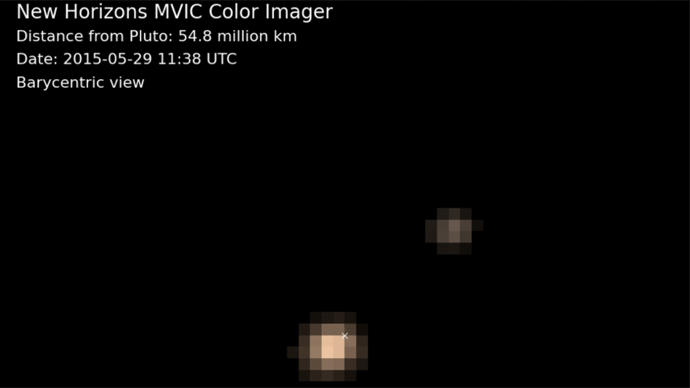NASA's New Horizon captures 'near-true color' images of Pluto (VIDEO)

The US space agency has published the first 'near-true color' images of the remote dwarf planet Pluto and its largest satellite taken by the New Horizons telescope. The picture quality leaves much to be desired, but NASA promises the best is yet to come.
NASA has compiled a number of photographs from its New Horizons mission on the approach to the icy dwarf planet. The series pictures were taken over the course of five days in three colors: blue, red and near-infrared. They were then put together to make two looped movies, showing Pluto and its largest satellite, Charon.
Pluto is a dwarf planet, only about one-sixth of Earth’s size, which is why it was excluded from the list of Solar System's "proper" planets in 2006, when the definition of "planet" was reviewed. It does orbit the sun, though, and is one of the largest bodies in the Kuiper belt - a ring of space debris left over from the Solar System's formation, beyond the orbit of Neptune.
It has five known moons, the largest of which, Charon, is sometimes dubbed Pluto's "twin planet": the two appear to orbit each other around a common center of gravity. One of the videos NASA released shows that rotation, with the center of gravity marked with an X. The center is much closer to Pluto due to the planet's larger mass compared to Charon.
“It’s exciting to see Pluto and Charon in motion and in color,” the New Horizons blog quotes Principal Investigator Alan Stern. “Even at this low resolution, we can see that Pluto and Charon have different colors—Pluto is beige-orange, while Charon is grey. Exactly why they are so different is the subject of debate.”
Pluto’s moment in history has arrived: @IanZiering talks of the ‘plight of Pluto’ & how @NASANewHorizons changes it. https://t.co/pgECY4ScBa
— NASA (@NASA) June 21, 2015
The resolution will get better, NASA specialists promise, as the New Horizons spacecraft approaches Pluto. It is set to come as close as 12,500 kilometers to the surface on July 14 this year.
“Color observations are going to get much, much better, eventually resolving the surfaces of Charon and Pluto at scales of just kilometers,” the project's blog quotes deputy project scientist Cathy Olkin. “This will help us unravel the nature of their surfaces and the way volatiles transport around their surfaces. I can’t wait; it’s just a few weeks away!”
New Horizons is the first mission to Pluto in history. It is managed by the Johns Hopkins University Applied Physics Laboratory.












